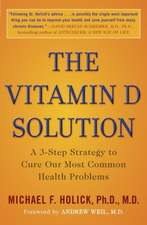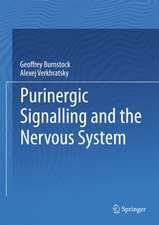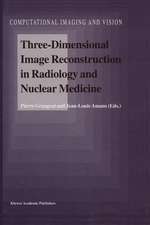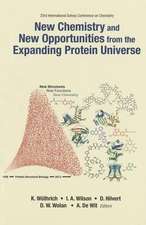Biologic Effects of Light 2001: Proceedings of a Symposium Boston, Massachusetts June 16–18, 2001
Editat de Michael F. Holicken Limba Engleză Hardback – 30 mar 2002
| Toate formatele și edițiile | Preț | Express |
|---|---|---|
| Paperback (1) | 1106.69 lei 6-8 săpt. | |
| Springer Us – 8 noi 2012 | 1106.69 lei 6-8 săpt. | |
| Hardback (1) | 1111.61 lei 6-8 săpt. | |
| Springer Us – 30 mar 2002 | 1111.61 lei 6-8 săpt. |
Preț: 1111.61 lei
Preț vechi: 1170.12 lei
-5% Nou
Puncte Express: 1667
Preț estimativ în valută:
212.74€ • 221.28$ • 175.62£
212.74€ • 221.28$ • 175.62£
Carte tipărită la comandă
Livrare economică 12-26 aprilie
Preluare comenzi: 021 569.72.76
Specificații
ISBN-13: 9780792376699
ISBN-10: 0792376692
Pagini: 500
Ilustrații: XX, 500 p.
Dimensiuni: 155 x 235 x 31 mm
Greutate: 0.85 kg
Ediția:2002
Editura: Springer Us
Colecția Springer
Locul publicării:New York, NY, United States
ISBN-10: 0792376692
Pagini: 500
Ilustrații: XX, 500 p.
Dimensiuni: 155 x 235 x 31 mm
Greutate: 0.85 kg
Ediția:2002
Editura: Springer Us
Colecția Springer
Locul publicării:New York, NY, United States
Public țintă
ResearchDescriere
As humans ventured into the twentieth century, the industrialized countries were confronted with the scourge of rickets. Although solariums were becoming common in the early 1900s and phototherapy was gaining popularity as a result of the awarding of a Nobel Prize to Finsen in 1903, it wasn't until 1921 when Hess and Unger demonstrated that rickets could be cured by exposure to sunlight that the healthful benefit of sun exposure appreciated. In 1941, Apperly (Cancer Research; 1: 191-195, 1941) noted that the occasional increased risk of skin cancer was associated with a decreased risk of many other more common and serious cancers. The alarming increase in the number of cases of skin cancer, especially melanoma, has caused great concern about the negative role of sunlight in health. The Sixth International Arnold Rikli Symposium on the Biologic Effects of Light was held in Boston, Massachusetts from June 16th - 18th, 2001. The goal of this Symposium was to focus on the very popular practice of tanning either by sunlight or by artificial light sources and the overall impact this practice has on health and disease. The program was organized by members of the Scientific Advisory Committee and my co-chair emeritus, Professor Ernst G. Jung. The Program Committee organized an outstanding state-of-the-art program that was enthusiastically received by the participants.
Cuprins
Preface. A. Rikli. A Great-Grandson's Perspective. UV Measurement and Photobiological Evaluation. Measurement of Photobiologically Weighted Irradiances and Exposures; W. Heering. Detectors for UV Measurement - State-of-the-Art and New Developments; A. Gugg-Helminger. Measurement of Photobiological Exposure of Ocular Tissues; D.H. Sliney. UVR Measurement Error Sources: Spectral Response of Filtered Broadband Detectors; R. Angelo. Pulsed UVB Irradiation converts 7-Dehydrocholesterol to Previtamin D3 and Photoproducts; D.G. Changaris, et al. Assessment of Design Configurations for the Therapeutic Use of Daylight; P.G. Mead. Visual Significance of Yellow Optical Filters; S. Zigman. Suntanning and Pigmentation. The Role of DNA Damage in Melanogenesis: Potential Role for Telomeres; M.S. Eller, et al. How Much Photoprotection Does a Tan Afford? A.R. Young. Production and Persistence of UV-Induced Tan; S.A. Miller, et al. Effectiveness of Tanning Procedures; J.C. van der Leun. Effects of Topically Applied Glycolic Acid (GA) on the Sensitivity of Human Skin to UV-Induced Damage; K. Kaidbey, et al. Quantitative Evaluation of Pigmentation Following Repeated UV Irradiation by Microflash Spectrophotometer; F.N. Chimeh, M.R. Holick. Validation of a Sun-Exposure Questionnaire for Adolescent Girls; J. Cobb, et al. Vitamin D and Bone Health. Seasonal Changes in the IGF Regulatory System and the Relationship to Bone Loss in Elderly Women; C.J. Rosen, et al. Vitamin D: Importance for Bone Health, Cellular Health and Cancer Prevention; M.F. Holick; Impact of Vitamin D and Calcium on Bone and Mineral Metabolism in Older Adults; B. Dawson-Hughes. Hypovitaminosis D Myopathy; H. Glerup, E.F. Eriksen. Effects of Dietary Vitamin D and UVB Irradiance on voluntary Exposure to Ultraviolet Light, Growth and Survival of the Panther Chameleon Furcifer pardalis; G.W. Ferguson, et al. Production of Previtamin D3 by a Mercury Arc Lamp and a Hybrid Incandescent &endash; Mercury Arc Lamp; E.A. Holick. Vitamin D Insufficiency is Common and Underdiagnosed in African American Female Patients; S. Shewakramani, et al. Non-Calcemic Effects of Vitamin D. The Role of Ultraviolet Radiation on Cardiocirculatory Regulation and on Cardiovascular Risk; R. Krause, et al. Vitamin D Autocrine System and Cancer; T.C. Chen, M.F. Holick. The Epidermal Vitamin D System; S. Segaert, et al. Vitamin D and the Big Three: Cancers of the Colon, Breast, and Prostate; G.G. Schwartz. An Ecologic Study of the Role of Solar UV-B Radiation in Reducing the Risk of Cancer Using Cancer Mortality Data, Dietary Supply Data, and Latitute for European Countris; W.B. Grant. A Reduced 25-Hydroxyvitamin D-1&agr;-Hydroxylase Activity in Human Prostate Cancer Cells Can be Restored by Gene Transfer; M. Young, et al; Vitamin D, Sunlight and Colon Cancer: The Implications for the Presence of the 1&agr;-Hydroxylase in the Normal and Malignant Colon Cancer Tissue; V. Tangpricha, et al. Photoimmunology. Utraviolet A Radiation-Induced Signal Transduction in Human Keratinocytes; J. Krutmann, S. Grether-Beck. UVB and UVA-1 Effects on HIV Activation; P.D. Cruz Jr. Clinical Relevance of UVA1-Induced T-Cell Apoptosis; A. Morita, J. Krutmann. In Vitro Function of Double-Dose Platelets Treated with the Pathogen Inactivation Helinx™ Technology; K. Janetzko, et al. Photomedicine and Photobiologic Aspects in Skin. Light in the Treatment of Skin Disease; H.


















